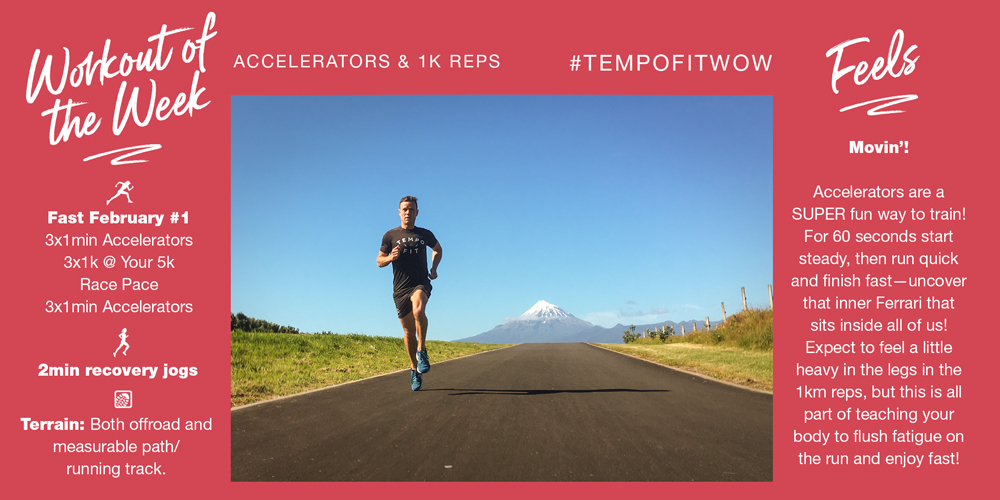
Fast February: Part 1
This month is all about getting those wheels rollin’! And to help fuel your workouts, we’ve partnered with New Balance to give away a $150 EVERY WEEK in February.
To enter, all you need to do is tag @runtempofit AND @newbalancenz in your Instagram or Facebook workout posts each week.
Get on it!
#tempofitwow019
And this week’s workout is …
WHAT
3x1min Accelerators (2min jog recoveries)
3x1km @ your 5k race pace (2min jogs)
3x1min Accelerators (2min jogs)
Accelerators: You start at a steady pace and accelerate to finish the 60 seconds fast.
Terrain: Running track or flat measurable path (the accelerators can be run as fartlek on trails).
Feels: Movin’!
Accelerators are a SUPER fun way to train! When you get the hang of them you really do start to uncover that inner Ferrari that sits inside all of us!
Expect to feel a little heavy in the legs in the 1km reps, but this is all part of teaching your body to flush fatigue on the run.
WHY
Uncovering the multiple gears and speeds we have as runners is vital to becoming a more complete runner. If you owned a Ferrari you wouldn’t just drive it around in first gear! And it’s the same with our bodies!
HOW
Accelerators: I recommend that you break these 1-minute accelerators into three 20-second sections:
- First 20s—Steady: Run at a steady pace, kinda like your one-hour race pace or lactate threshold.
- Middle 20s—Quick: Increase to your 10-minute race pace (i.e. VO2max pace for those who have been doing the Dec/Jan workouts)
- Final 20s—Fast: Finish at repetition pace (i.e. the pace you can hold for 5 minutes flat out). So this isn’t a sprint but you are moving quick!
To calculate the exact paces, enter a recent or estimated race time to our TempoFit.org calculator.
HOW EXACTLY DO I GET FASTER?
There are three key components to getting faster. And while at least two of them might seem obvious, the truth is that most runners neglect at least one of the three aspects.
- Run More: On the surface this seems obvious, but what we are after here is the building of your aerobic engine—he ability for your body to transport oxygen to where it’s needed most for running. You can improve this engine to a certain extent by cross training (like cycling and swimming) but ultimately the best way to do it is time-on-feet running at a conversational pace.
- Run Faster: I just said you need to run more at an easy pace, but this running faster is different. What I mean, is that you need to be able to sprint faster. One of the best determinants of your marathon time is funnily enough how fast you can sprint for 200m. You see, what’s happening is that your max speed puts a glass ceiling on the rest of your running. For example, your speed for a marathon might be limited to anywhere between 55 and 70% of your maximum speed (depending on your aerobic fitness). So even to improve your marathon time, it helps to improve that base, raw speed as it forms a crucial part of the equation.
- Putting It All Together: I’ve seen many cases of runners with good aerobic engines and great sprint ability but don’t have the metabolic, mechanical and mental ability to run faster for longer at specific race distances. This is where we need to workouts and practice races at paces somewhere between sprinting and easy pace. And that is exactly what we’re doing with TempoFit Workout of the Week!
Podcast (workout-of-the-week): Play in new window | Download
Subscribe: Apple Podcasts | RSS | More



